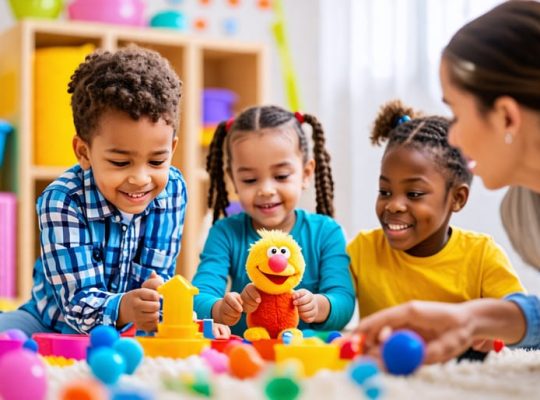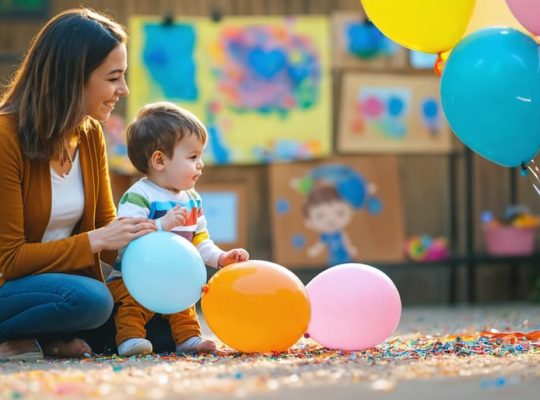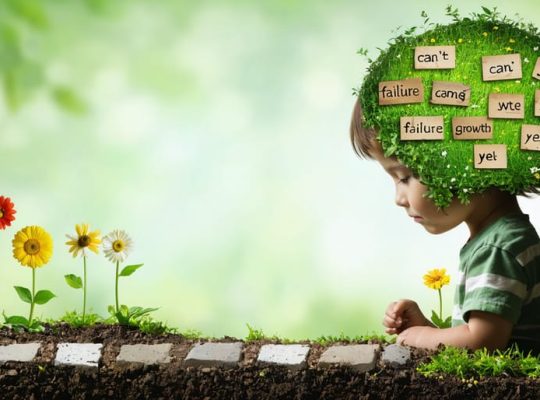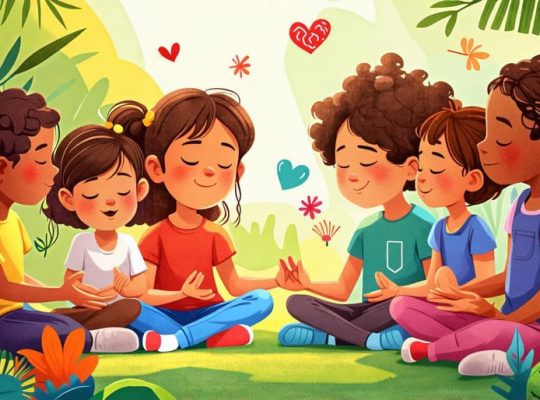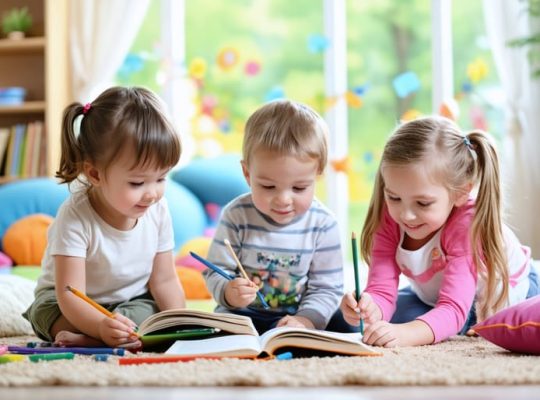Practice deep breathing to ground yourself in the present moment when PTSD symptoms arise. Inhale slowly for a count of four, hold for four, exhale for six. Repeat for several minutes whenever you need to calm your mind and body. This simple technique can help interrupt the fight-flight-freeze response triggered by trauma and stress.
Connect with your senses to pull yourself out of distressing thoughts and flashbacks. Pause and notice five things you can see, four things you can touch, three things you can hear, two things you can smell, and one thing you can taste. This sensory awareness exercise shifts your attention to the safety of your current environment, helping to recognize PTSD symptoms and reduce their intensity.
Move your body mindfully to release tension and calm your nervous system. Take a slow walk, focusing on the sensation of each step connecting with the earth. Stretch gently, bringing awareness to areas of tightness and consciously relaxing those muscles. Even small movements can help regulate your physiology and emotions, restoring a sense of safety and control.
The Power of Mindful Breathing
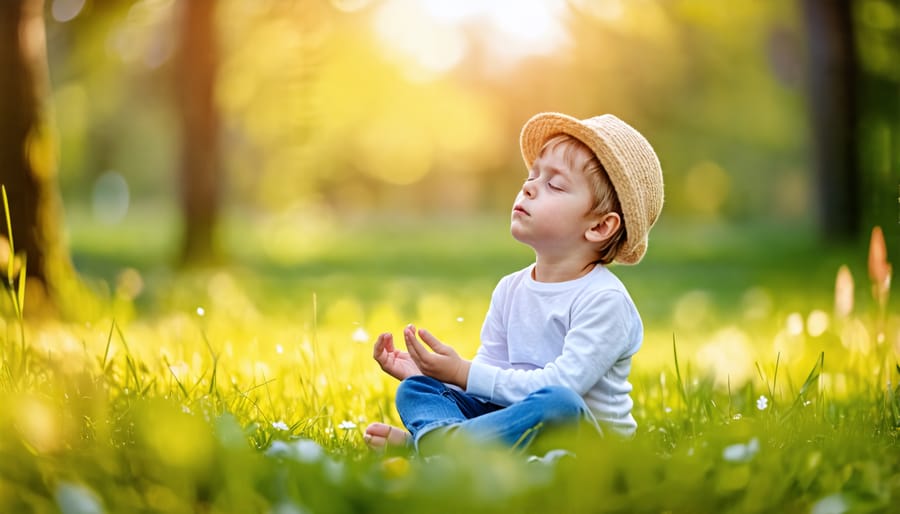
Balloon Breath
Balloon Breath is a playful mindfulness technique that uses the imagery of inflating and deflating a balloon to guide children through deep, calming breaths. To practice, have your child sit comfortably and imagine they are holding a balloon. As they inhale slowly through their nose, encourage them to picture the balloon growing bigger and bigger. Have them pause for a moment, holding the breath and the imaginary fully inflated balloon. Then, guide them to exhale slowly through their mouth, as if they are gently releasing the air from the balloon.
As they breathe out, they can imagine the balloon gradually deflating until all the air is released. Repeat this process for several breaths, focusing on the sensation of the breath moving in and out of the body and the visualization of the expanding and contracting balloon. This simple yet effective exercise helps children slow down their breathing, bring awareness to the present moment, and find a sense of calm and relaxation. Balloon Breath is a great technique to use when a child is feeling overwhelmed, anxious, or needs a quick break to reset and refocus.
Bumble Bee Breath
The Bumble Bee Breath is a playful yet calming exercise that helps children focus and relax. To begin, invite your child to imagine they are a busy bumble bee buzzing from flower to flower. Guide them to take a deep breath in through their nose, then make a gentle humming or buzzing sound as they slowly exhale through their mouth. Encourage them to feel the pleasant vibration of the buzz in their lips, mouth, and throat.
As they continue buzzing, have them picture a beautiful garden filled with colorful flowers. With each breath, they can imagine flying to a new blossom, taking in its sweet scent and vibrant hues. This visualization helps engage their senses and keeps their mind focused on the present moment.
Repeat the Bumble Bee Breath for several rounds, gradually slowing down the pace of the buzzing and breathing. Remind your child that just like a bumble bee, they too can find moments of calm and stillness amidst their busy day. This simple yet effective technique promotes deep breathing, reduces stress, and brings a sense of playfulness to mindfulness practice.
Grounding Techniques for Anxious Moments
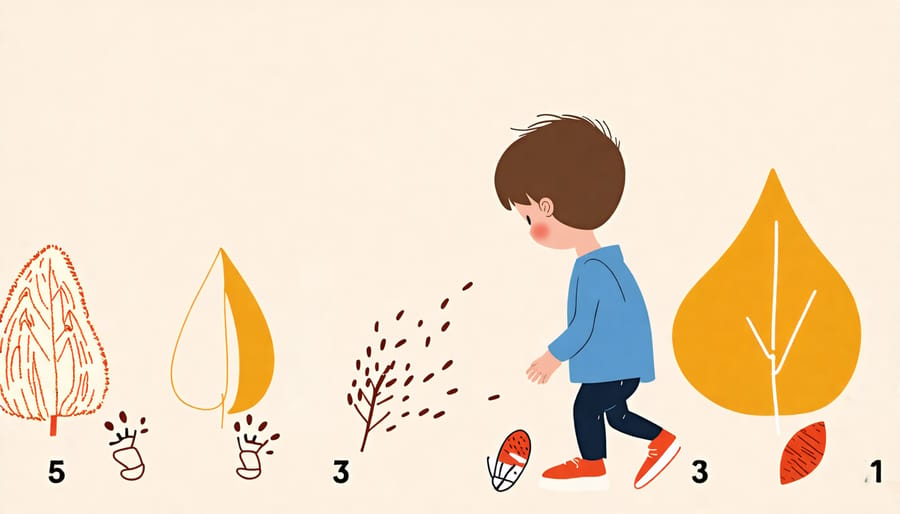
The 5-4-3-2-1 Method
The 5-4-3-2-1 method is a simple yet powerful grounding technique that engages all five senses to bring you back to the present moment. When feelings of anxiety or flashbacks arise, this exercise can help you reconnect with your surroundings and find a sense of calm. Start by taking a slow, deep breath. Then, look around you and identify five things you can see. Notice the colors, shapes, and textures of objects in your environment.
Next, tune into four things you can feel. This might be the warmth of the sun on your skin, the softness of your clothing, or the sensation of your feet touching the ground. Take a moment to really focus on each sensation.
Now, listen for three sounds in your environment. Perhaps it’s the gentle hum of a fan, the chirping of birds outside, or the muffled voices of people in another room. Allow yourself to fully absorb each sound.
Moving on, try to identify two things you can smell. It could be the aroma of freshly brewed coffee, the scent of a candle, or the fragrance of flowers nearby. Take a deep breath and let the smells fill your nostrils.
Finally, focus on one thing you can taste. If you don’t have food or drink readily available, simply notice the current taste in your mouth or the sensation of your tongue against your teeth.
By engaging all five senses and concentrating on the present moment, the 5-4-3-2-1 method can help ground you when PTSD symptoms feel overwhelming. Remember, it’s okay to take things one step at a time and be gentle with yourself as you practice this technique.
Grounding Objects
Grounding objects, also known as fidgets or worry stones, can be powerful tools for promoting calm and focus in children with PTSD. These small, tactile items provide a physical anchor to the present moment, helping kids regulate their emotions and cope with overwhelming thoughts or feelings. Smooth river stones, stress balls, putty, or soft plush toys are all great options. Encourage your child to keep their grounding object close by, in a pocket or backpack, so it’s always available when needed.
When your child feels anxious, scared, or triggered, guide them to hold their grounding object and focus on the sensations – the texture, weight, temperature, and shape. Have them describe the object in detail using their senses. This mindful attention to the present can help interrupt distressing thoughts and ground them in the here and now.
You can also incorporate grounding objects into calming routines or relaxation exercises. For example, have your child hold their worry stone while practicing deep breathing or visualization. The tactile input can enhance the soothing effects of these techniques.
Remember, what works for one child may not work for another. Let your child choose a grounding object that resonates with them and experiment with different ways of using it. With patience and practice, grounding objects can become a powerful tool in your child’s coping toolkit, providing a tangible reminder that they are safe, supported, and capable of managing difficult emotions.
Mindful Movement for Restless Energy
Mindful movement can be a powerful tool for releasing restless energy and promoting relaxation in children with PTSD. Simple yoga poses, stretches, and mindful walking techniques help foster a mind-body connection, allowing children to feel more grounded and present in the moment. Engaging in gentle physical activity can also serve as a healthy outlet for pent-up emotions and stress.
To begin, guide your child through a few basic yoga poses, such as cat-cow, child’s pose, or seated forward bend. Encourage them to focus on their breath as they move through each posture, noticing how their body feels and any sensations that arise. Avoid pushing them beyond their comfort level, and emphasize that there’s no need to strive for perfection.
Stretching exercises, like reaching for the sky or touching toes, can also help release tension and promote a sense of calm. Make it fun by incorporating playful elements, such as pretending to be a tree swaying in the wind or a cat waking up from a nap. Encourage your child to take slow, deep breaths as they stretch, imagining any worries or anxious feelings melting away with each exhalation.
Mindful walking is another effective technique for channeling restless energy. Take a slow, purposeful walk together, inviting your child to pay attention to the sensations of their feet touching the ground, the rhythm of their breath, and the sights, sounds, and smells around them. This practice can help them feel more connected to their surroundings and less caught up in distressing thoughts or emotions.
Remember, the goal of mindful movement is to cultivate a sense of presence, relaxation, and self-awareness. By incorporating these techniques into your child’s daily routine, you can help them develop valuable coping skills and foster a greater sense of inner peace and resilience in the face of PTSD symptoms.
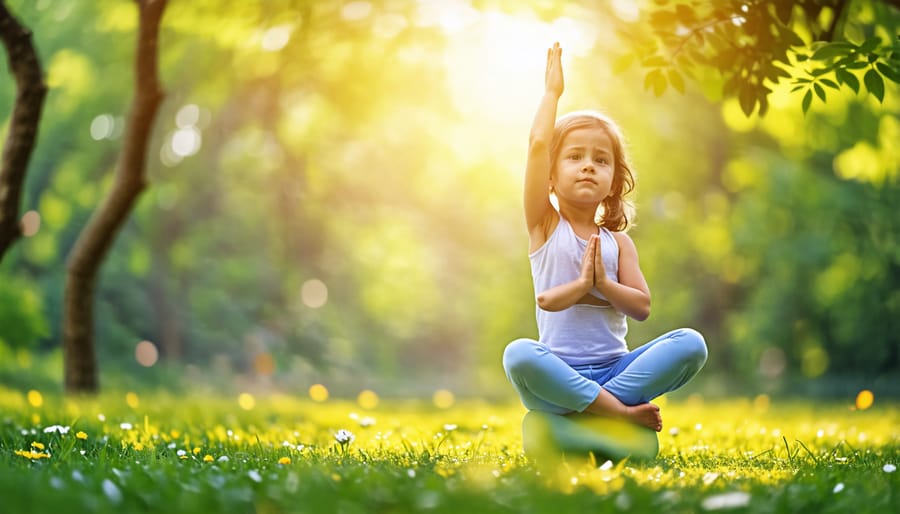
Creating a Mindfulness Routine
Creating a mindfulness routine for your child can help them build resilience and cope with PTSD symptoms. Start by setting aside a few minutes each day for mindfulness practice. It can be first thing in the morning, after school, or before bedtime. Choose a quiet, comfortable space where your child feels safe and relaxed.
Begin with simple breathing exercises, like counting breaths or belly breathing. Encourage your child to focus on the sensation of the breath moving in and out. Gradually introduce other mindfulness activities, such as body scans, mindful walking, or guided imagery.
Make the routine engaging by incorporating age-appropriate games, stories, or art activities. For example, have your child draw their breath or emotions. Use props like stuffed animals or glitter jars to teach mindfulness concepts.
Consistency is key, so try to practice at the same time each day. Lead by example and practice mindfulness together as a family. This not only reinforces the routine but also helps you nurture mental well-being for both yourself and your child.
Remember, every child is different, so be patient and adaptable. Start with shorter sessions and gradually increase the duration as your child becomes more comfortable. Celebrate their efforts and progress, no matter how small.



